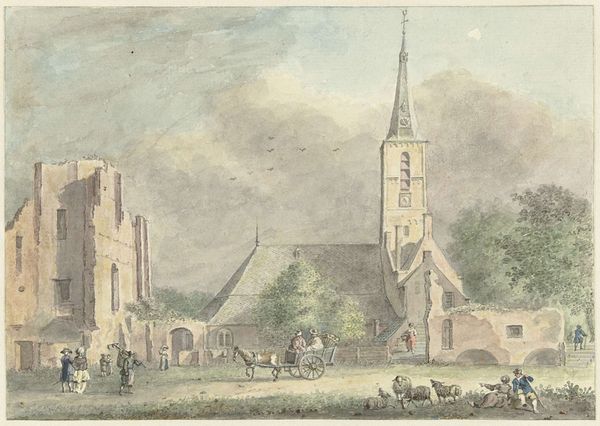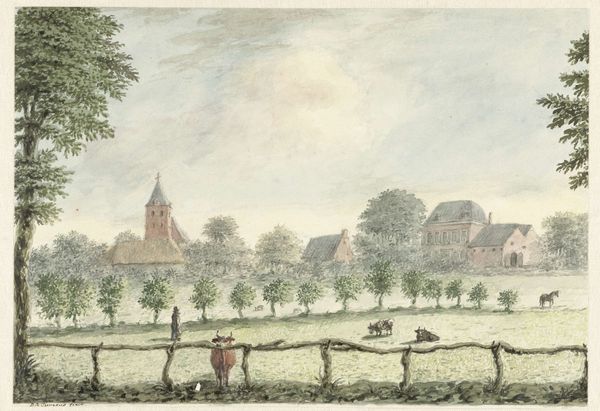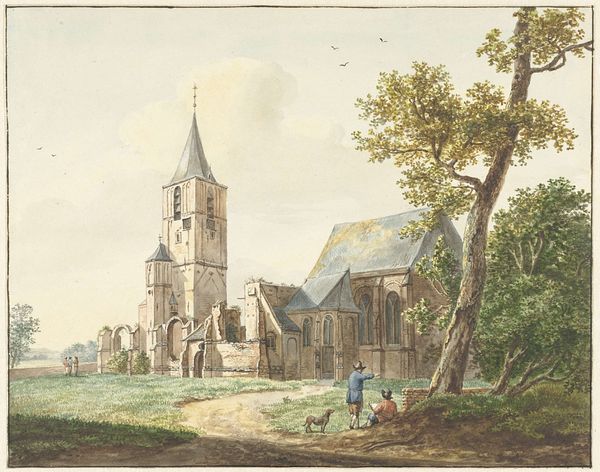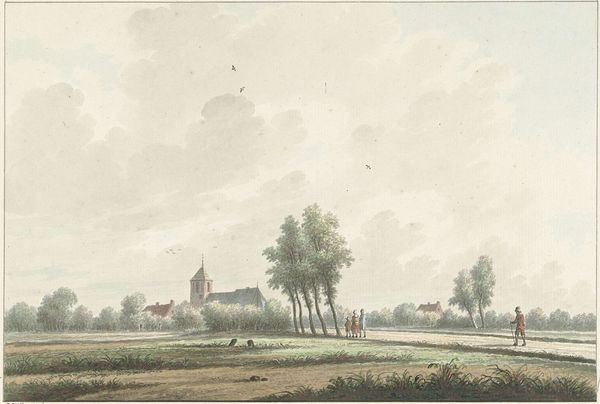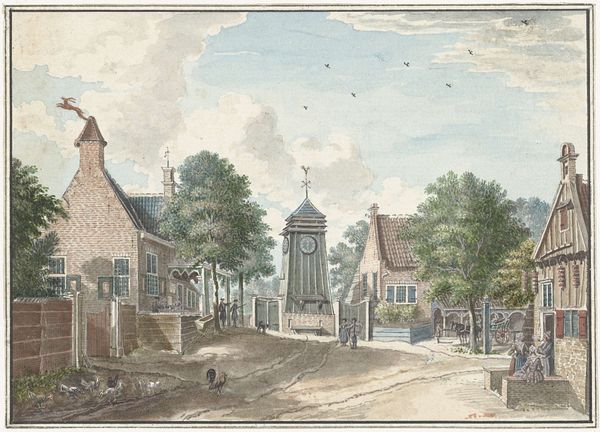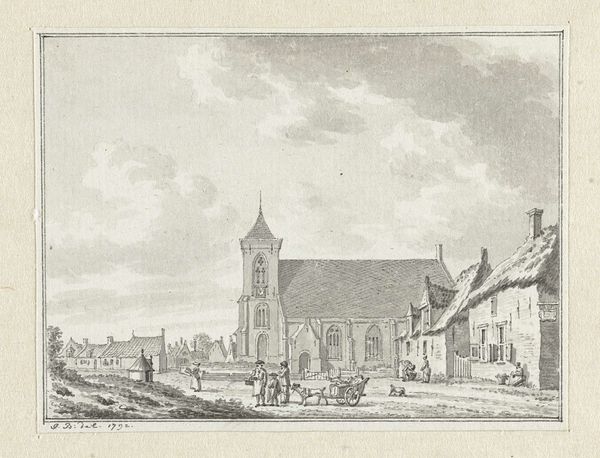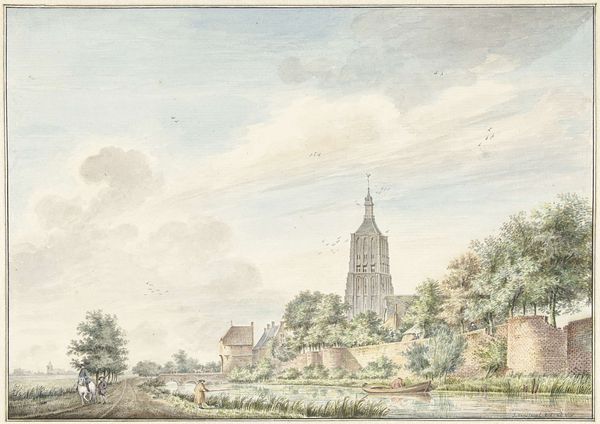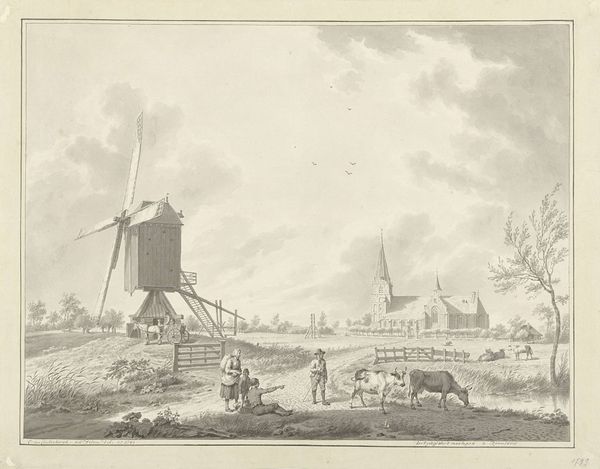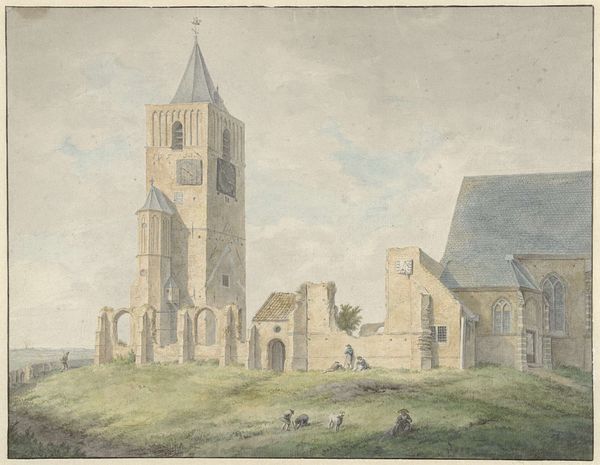
plein-air, watercolor
#
dutch-golden-age
#
plein-air
#
landscape
#
watercolor
#
romanticism
#
cityscape
#
watercolour illustration
#
genre-painting
Dimensions: height 197 mm, width 268 mm
Copyright: Rijks Museum: Open Domain
Curator: Before us is Hermanus Petrus Schouten's "Kerk van het dorp Westkapelle in Zeeland," created between 1757 and 1822. It’s rendered delicately in watercolor. Editor: It feels washed out. The colour palette evokes nostalgia, but I see also the inherent instability of watercolor – that this place could disappear if touched. Curator: Consider the technique itself. The 'plein-air' style suggests an emphasis on immediate experience, but it's filtered through the prevailing Romantic sensibilities. Look at the light and how it gently washes across the church tower and the surrounding village structures. Editor: Precisely. Note the meticulous rendering of the church tower against the windmill. Both are emblems of distinct types of labor; agricultural vs. spiritual, positioned at odds in this almost staged landscape. It really pushes one to consider consumption and economy of art at this moment in time. Curator: Beyond its technical merit, it seems to function as a testament to the everyday. Notice the groups of figures. They anchor the grandeur of the architectural subjects in relatable narrative moments. We are reminded this is a living, breathing place. Editor: But consider, too, the commodification inherent in this genre painting. This work invites an appraisal of its place in representing labour, a scene consumed in a distant parlor. Curator: Maybe, but Schouten seems less invested in that critique and more invested in capturing the light, the very Dutch essence of this place, through the watercolor's luminosity. The appeal is ultimately in the tangible, observable experience. Editor: Yet we can't ignore its broader significance—its contribution to representing society during a period of transition, viewed through a lens both aesthetically beautiful and historically grounded in artistic labor and distribution. Curator: True enough, an evocative piece to reflect upon. Editor: Indeed, making me reassess the function of idyllic landscapes amid turbulent historical transformations.
Comments
No comments
Be the first to comment and join the conversation on the ultimate creative platform.
